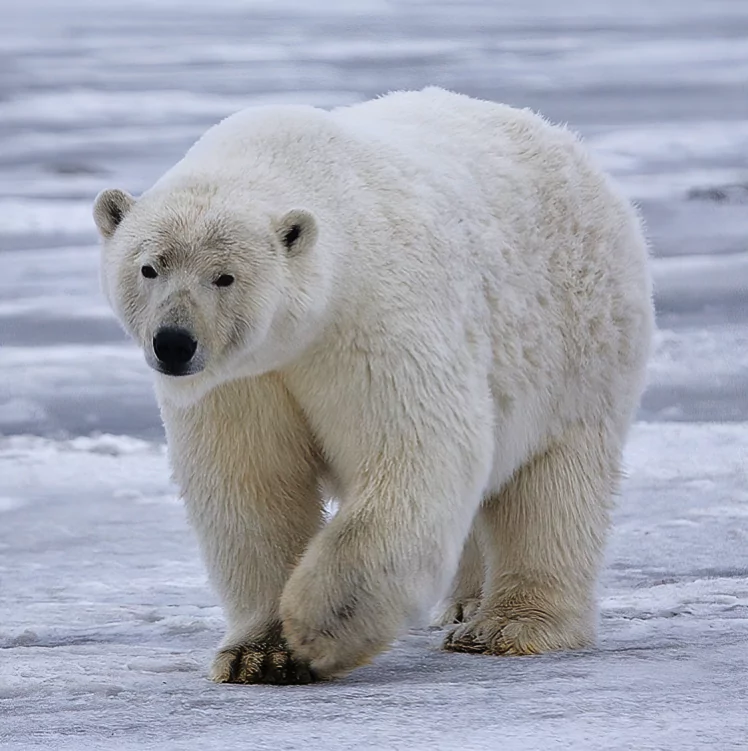Context: The Arctic region has reported the first case of death of a polar bear due to the Highly Pathogenic Avian Influenza (HPAI).
Polar Bear Dies Due to Bird Flu for First Time
- The bear was found dead near Utqiagvik in Alaska’s northernmost community, as reported by the Alaska Department of Environmental Conservation.
- HPAI was first detected in the Arctic region in the second week of April 2023 among birds and a fox.
About H5N1 virus (Bird flu)
- About: Avian influenza, also known as ‘bird flu’, is a disease primarily affecting birds and is caused by a virus of the Orthomyxoviridae family.
- First reported in poultry, the HPAI outbreak of variant H5N1 started in 2021 after it spread rapidly among wild bird populations in different parts of the world.
- Influenza A viruses can circulate in seven different animal species including humans, wild water birds, domestic poultry, swine, horses, dogs and bats.
- Zoonotic: Five subtypes of avian influenza A viruses (H5, H6, H7, H9, and H10 ) can cause human infections.
- Transmission: It can transmit through migratory wild birds. The main risk factor for transmission from birds to humans is direct or indirect contact with infected animals or with environments and surfaces contaminated by feces.
|
Must Read: WOAH approves India’s declaration of freedom from avian influenza
About Polar Bear
- Scientific name: Ursus maritimus
- IUCN status: Vulnerable
- Habitat: Arctic Ocean, sea ice, and adjacent coastal areas
- The Arctic sea ice is crucial to polar bears’ survival as they use it for hunting seal and also for travelling, mating and resting.

- Prey base: Polar bears are Arctic region top predators with their main prey consists of ringed and bearded seals.
- They have a thick layer of body fat and a water-repellent coat that insulates them from the cold air and water.
- Significance of Polar bears:
- Top predator in the Arctic: They play a major role in keeping biological populations in balance, maintaining the food chain and health of the ecosystem.
- Example: Polar bear left overs serve as food resources for scavengers like Arctic foxes and Arctic birds.
- Overpopulation of seals: It could endanger the existence of crustaceans and fish that are an important food source for local human populations as well as other Arctic wildlife.
News source: Down to Earth
![]() 4 Jan 2024
4 Jan 2024

